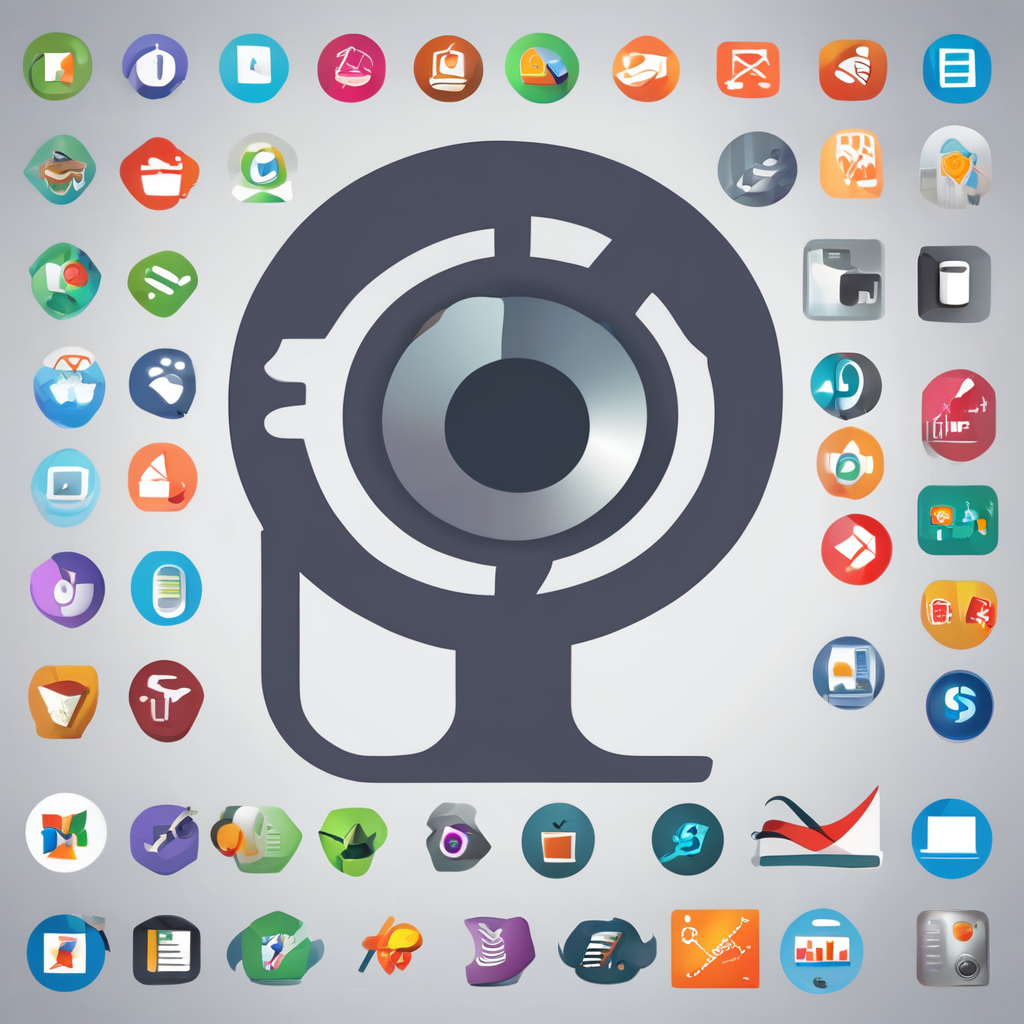Unlocking Success in Cross-Platform Mobile Development: Key Strategies for Exceling with Xamarin
In the ever-evolving landscape of mobile app development, choosing the right framework can be the difference between a successful and a struggling application. Among the various cross-platform development frameworks, Xamarin stands out for its robust features, high performance, and seamless integration with native APIs. Here’s a comprehensive guide on how to excel in cross-platform mobile development using Xamarin.
Understanding Xamarin and Its Benefits
Xamarin, developed by Microsoft, is a powerful cross-platform framework that allows developers to build mobile applications for iOS, Android, and Windows using the C# programming language and the .NET framework. Here are some key benefits that make Xamarin a preferred choice for many developers:
Also to read : Mastering Data Lakes: The Ultimate Guide to Harnessing AWS Glue and Amazon S3 for Success
Cross-Platform Support
Xamarin enables developers to write code once and use it across multiple platforms, including iOS, Android, and Windows. This significantly reduces development time and costs, as well as simplifies the maintenance process[1][3][5].
High Performance
Xamarin compiles C# code into native binaries, which enhances the speed and efficiency of mobile apps. The use of Just-In-Time (JIT) compilation and native performance features makes Xamarin a suitable choice for high-performance, resource-intensive apps[3].
Have you seen this : Mastering Apache Airflow: The Definitive Guide to Optimizing Data Workflow Scheduling and Orchestration
Integration with Existing .NET Code
Xamarin integrates seamlessly with existing .NET code, allowing developers to leverage their existing skills and codebase. This integration also enables the use of popular languages like C# and F#[1][3].
Visual Studio IDE Integration
Xamarin integrates perfectly with Microsoft Visual Studio, a powerful Integrated Development Environment (IDE) that enhances the development process for C# developers. Tools like Xamarin.Forms and Xamarin Live Player further improve development efficiency[1][3].
Key Features of Xamarin
Native Apps and Shared Codebase
Xamarin allows developers to build native apps for Android, Windows, and iOS using C# and .NET. It enables the sharing of up to 90% of the code across multiple platforms, which speeds up the development process and simplifies maintenance[1][3].
Cross-Platform UI
Xamarin provides a cross-platform UI toolkit, Xamarin.Forms, which includes native and platform-specific UI components. This helps in creating engaging user interfaces that provide a high-quality user experience across different devices[1][3].
Additional Features
- Cloud Deployment: Xamarin development services allow developers to deploy their apps to the cloud, simplifying and speeding up the development process.
- Xamarin Test Cloud: This feature makes it easy to test apps across multiple platforms and devices.
- Xamarin Insights: Provides real-time analytics and crash reporting to help developers diagnose and fix issues quickly.
- Xamarin Component Store: Offers access to third-party components and libraries for Xamarin apps[1].
Pros and Cons of Using Xamarin
Pros
- Cross-platform support for iOS, Android, and Windows.
- Integration with existing .NET code.
- Support for popular languages like C# and F#.
- Visual Studio IDE integration.
- Easy access to native APIs.
- High performance due to compiled C# code and JIT compilation[1][3].
Cons
- Limited third-party library support.
- Restricted performance capabilities in some cases.
- Potentially high costs for enterprise-level apps.
- Difficulty debugging some native components[1].
Comparing Xamarin with Other Frameworks
When choosing a cross-platform framework, it’s essential to compare the features and benefits of different options. Here’s a comparison between Xamarin, Flutter, and React Native:
Xamarin vs. Flutter
- Licensing: Xamarin uses a dual licensing approach, requiring commercial licenses for some enterprise functionality, while Flutter is fully open-source[2].
- Community: Flutter has a bigger, more vibrant community that fosters innovation more quickly[2].
- Performance: Flutter compiles its code to ARM code using Ahead-of-Time (AOT) compilation, while Xamarin compiles C# code into native binaries[2][4].
Xamarin vs. React Native
- Programming Language: Xamarin uses C# and .NET, while React Native uses JavaScript[3].
- Performance: Xamarin delivers near-native performance due to compiled C# code, whereas React Native uses a JavaScript bridge that can introduce performance lag[3][4].
- Code Reusability: Both frameworks offer high code reusability, but Xamarin allows up to 90% code sharing across platforms[1][3].
Practical Insights and Actionable Advice
Choosing the Right Tools
When developing with Xamarin, it’s crucial to use the right tools to enhance your development process. Here are some tools you should consider:
- Xamarin.Forms: A UI toolkit that includes native and platform-specific UI components.
- Xamarin Live Player: Allows developers to test apps in real-time, reducing the need for full compilations.
- Visual Studio: A powerful IDE that integrates seamlessly with Xamarin[1][3].
Optimizing Performance
To ensure high performance in your Xamarin apps, follow these tips:
- Use Compiled C# Code: Compile C# code into native binaries to reduce overhead and improve speed.
- Leverage JIT Compilation: Use Just-In-Time compilation to optimize app performance during runtime.
- Utilize Native Performance Features: Take advantage of native performance features to deliver near-native performance[3].
Ensuring Security
Security is a critical aspect of any mobile application. Here are some security tips for Xamarin development:
- Secure Authentication: Implement secure authentication mechanisms to protect user data.
- Data Encryption: Use encryption to protect sensitive data both in transit and at rest.
- Regular Updates: Keep your app updated with the latest security patches and updates[1].
Successful Xamarin Apps: Real-World Examples
Several businesses have successfully leveraged Xamarin to develop high-performance, cross-platform mobile applications. Here are a few examples:
- Olo: A restaurant ordering app that serves 30 million customers by leveraging Xamarin for efficient digital hospitality solutions.
- MRW: An international express transport company that used Xamarin to develop an Android app with 90% code reuse from their existing Windows application.
- Crédito Agrícola: A Portuguese bank that launched its banking app for all platforms in three months, reusing 75% of the code with Xamarin[3].
Xamarin offers a robust and efficient way to develop cross-platform mobile applications. With its ability to share code across multiple platforms, high performance capabilities, and seamless integration with native APIs, Xamarin is an excellent choice for businesses looking to expand their mobile presence.
Key Takeaways
- Cross-platform support for iOS, Android, and Windows.
- High code reusability with up to 90% code sharing.
- High performance due to compiled C# code and JIT compilation.
- Integration with existing .NET code and popular languages like C# and F#.
- Use of powerful tools like Xamarin.Forms and Visual Studio.
By understanding the benefits, features, and best practices of Xamarin, developers can unlock the full potential of cross-platform mobile development and create applications that deliver a seamless user experience across multiple platforms.
Table: Comparison of Xamarin, Flutter, and React Native
| Feature | Xamarin | Flutter | React Native |
|---|---|---|---|
| Platforms | iOS, Android, Windows | iOS, Android | iOS, Android, Windows, PWA |
| Programming Language | C# | Dart | JavaScript |
| Code Reusability | Up to 90% | Effective scalability via hot reloading | Excellent performance with code reusability |
| Performance | Near-native performance | AOT compilation, Skia rendering engine | JavaScript bridge, Hermes engine |
| UI/UX Support | Native UI/UX components | Attractive UI with material design elements | Native-like user experience with reusable components |
| Security | Secure authentication and encryption | Secure authentication and encryption | Secure authentication and encryption |
| Community Support | Large community of developers | Larger, more vibrant community | Large community of developers |
| Cost | Subscription-based pricing | Free and open-source | Free and open-source |
| Development Tools | Xamarin.Forms, Visual Studio | Flutter engine, hot reloading | React Native components, Hermes engine |
Detailed Bullet Point List: Best Practices for Xamarin Development
- Use Compiled C# Code: Compile C# code into native binaries to reduce overhead and improve speed.
- Leverage JIT Compilation: Use Just-In-Time compilation to optimize app performance during runtime.
- Utilize Native Performance Features: Take advantage of native performance features to deliver near-native performance.
- Implement Secure Authentication: Use secure authentication mechanisms to protect user data.
- Use Data Encryption: Encrypt sensitive data both in transit and at rest.
- Keep Your App Updated: Regularly update your app with the latest security patches and updates.
- Use Xamarin.Forms: Leverage the UI toolkit that includes native and platform-specific UI components.
- Test in Real-Time: Use Xamarin Live Player to test apps in real-time, reducing the need for full compilations.
- Integrate with Visual Studio: Use the powerful IDE to enhance your development process.
By following these best practices and leveraging the unique features of Xamarin, developers can create high-performance, cross-platform mobile applications that meet the evolving needs of modern businesses.











